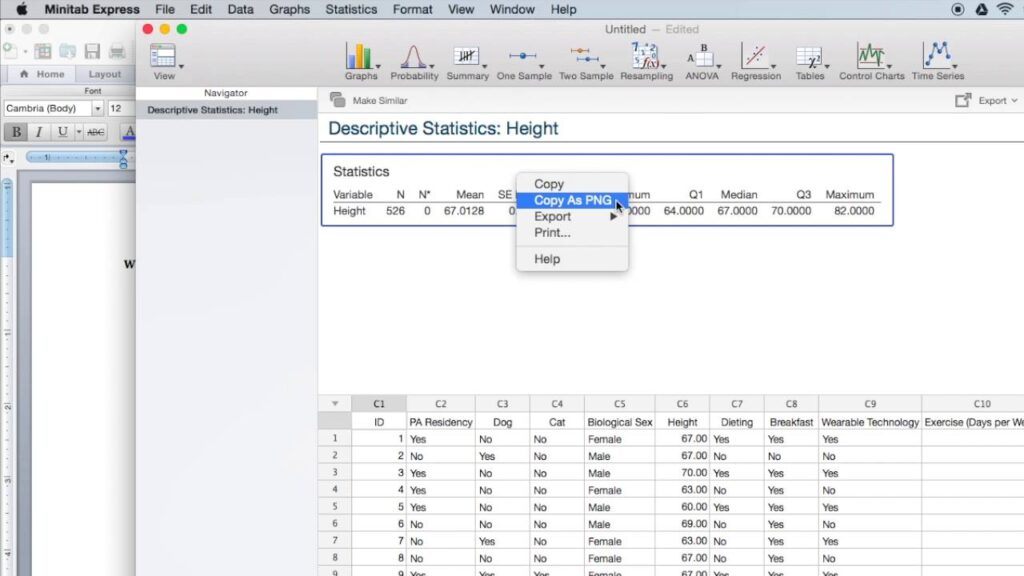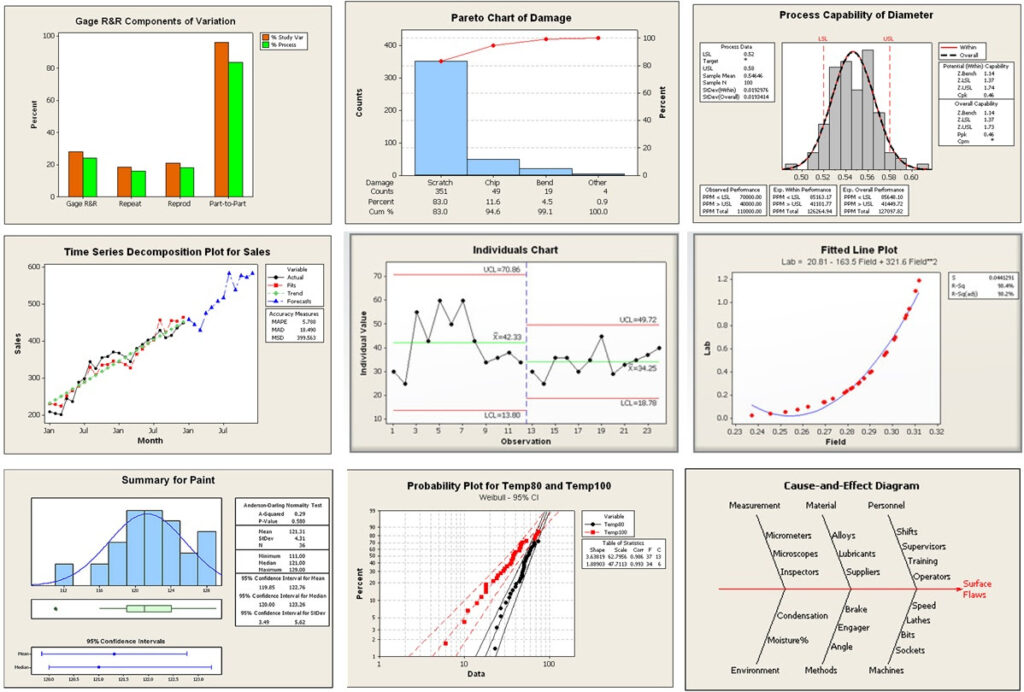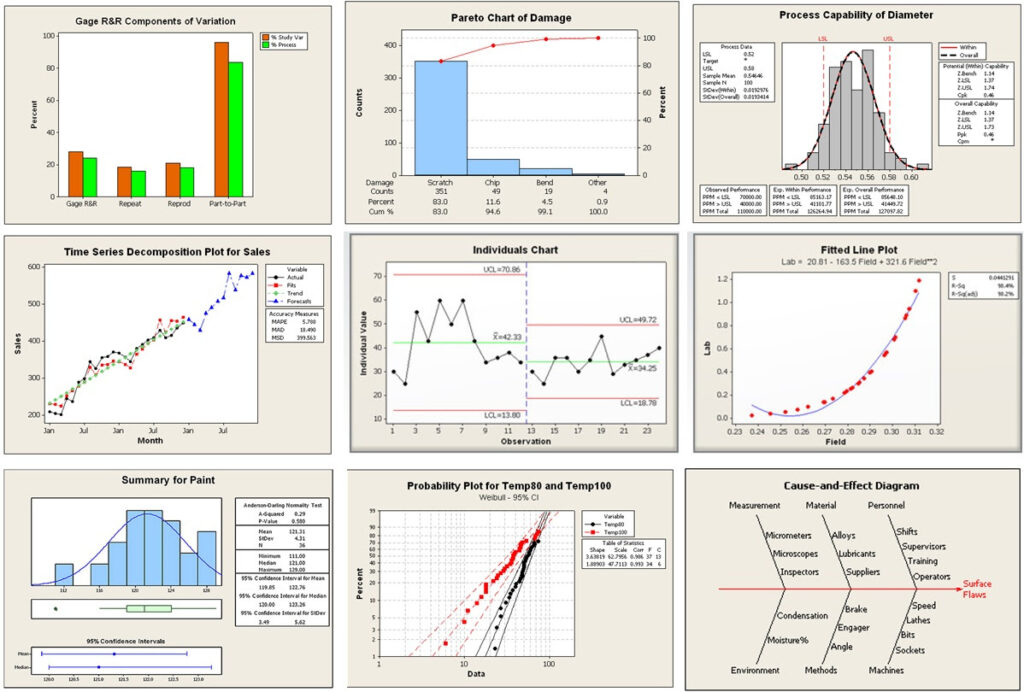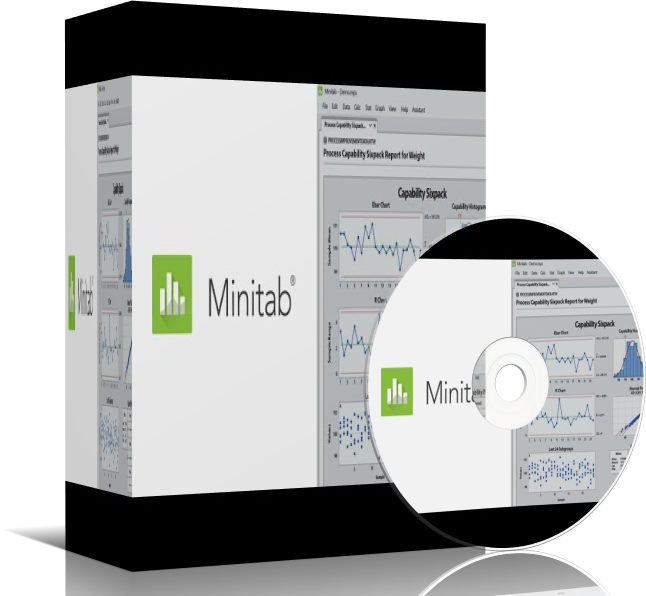Minitab software free download with crack
Minitab is a powerful statistical software package widely used in various fields, including quality improvement, research, and data analysis.
It provides a user-friendly interface and a comprehensive set of tools for performing statistical analysis, data visualization, and process improvement.
This article will guide you through a step-by-step process of using Minitab, covering essential functionalities and providing practical examples.
Getting Started with Minitab
Installation: Download and install Minitab from the official website. The installation process is straightforward and guided by an installer.
Interface: Once launched, you’ll be greeted by the Minitab window. The main components include the menu bar, toolbar, session window, worksheet, and graph windows.
Data Entry: You can enter data manually into the worksheet or import data from various sources like Excel, CSV files, and databases.
Data Analysis with Minitab
Minitab offers a wide range of statistical analysis tools categorized into various menus:
Basic Statistics:
Descriptive Statistics: Calculate measures like mean, median, standard deviation, and quartiles for your data.
t-Test: Compare the means of two groups to determine if there’s a significant difference.
One-Sample Z-Test: Test the hypothesis about the mean of a single population.
Regression:
Simple Linear Regression: Model the relationship between two variables.
Multiple Regression: Model the relationship between a dependent variable and multiple independent variables.
ANOVA:
One-Way ANOVA: Compare the means of multiple groups to determine if there’s a significant difference.
Two-Way ANOVA: Analyze the effects of two factors on a dependent variable.
Quality Tools:
Control Charts: Monitor processes and identify potential problems.
Capability Analysis: Determine if a process is capable of meeting specifications.
Design of Experiments (DOE): Plan and analyze experiments to optimize processes and products.
Data Visualization with Minitab
Minitab provides powerful tools for creating various types of graphs and charts:
Histograms: Display the distribution of data.
Boxplots: Show the spread and distribution of data for different groups.
Scatterplots: Visualize the relationship between two variables.
Time Series Plots: Analyze data that varies over time.
Pie Charts: Show the proportion of different categories.
Bar Charts: Compare the values of different categories.
Practical Examples
Example 1: Analyzing Customer Satisfaction Data
Import customer satisfaction survey data into Minitab.
Use descriptive statistics to understand the average satisfaction score and its variability.
Create a histogram to visualize the distribution of satisfaction scores.
Perform a t-test to compare the satisfaction scores of two different customer segments.
Example 2: Optimizing a Manufacturing Process
Design an experiment to investigate the effects of different process parameters on product quality.
Analyze the experimental data using ANOVA to identify the significant factors.
Create control charts to monitor the process after optimization.

Features
- Extensive Statistical Analysis Tools: Minitab provides a vast array of statistical analysis tools, including regression analysis, ANOVA, time series analysis, and much more. These advanced features help users to make data-driven decisions with confidence.
- Intuitive Data Visualization: The software’s built-in charting and graphing capabilities allow users to create visually stunning plots and graphs that effectively communicate their findings to stakeholders and colleagues.
- Streamlined Workflow: Minitab’s user-friendly interface and automation features enable users to streamline their data analysis processes, saving time and improving productivity.
- Collaborative Capabilities: Minitab supports collaboration, allowing multiple users to work on the same project simultaneously, ensuring seamless team-based workflows.
- Customizable Reports: Users can easily generate professional-looking reports that can be tailored to their specific needs, making it easier to present their findings.
Technical Specifications:
Version: Minitab 19
Interface Language: English
Audio Language: N/A
Uploader / Repacker Group: Minitab Inc.
File Name: Minitab_19_Setup.exe
Download Size: 324 MB
System Requirements:
- Windows 10, 8.1, or 7 (32-bit or 64-bit)
- 2 GHz or faster processor
- 2 GB of RAM
- 1 GB of available hard disk space
- 1024 x 768 or higher screen resolution

Adjusting Graphics Settings:
- Open Minitab and go to the “File” menu.
- Select “Options” and then click on the “Graphics” tab.
- Adjust the settings according to your preferences, such as changing the font size, line thickness, or color scheme.
- Click “OK” to save the changes and apply them to your Minitab session.
Troubleshooting Common Issues:
- Slow Performance: If you’re experiencing slow performance, try closing any unnecessary applications running in the background and ensure that your system meets the minimum hardware requirements.
- Licensing Issues: If you’re encountering licensing problems, make sure that your Minitab license is valid and has not expired.
- Compatibility Problems: Ensure that your system is running a compatible version of Windows and that all necessary dependencies are installed.

How to Use Minitab:
- Launch Minitab and familiarize yourself with the user interface.
- Explore the various menus and toolbars to access the different analysis tools and features.
- Import your data into Minitab and begin your data analysis journey.
- Utilize the built-in tutorials and documentation to learn more about the software’s capabilities and how to perform specific tasks.
For more information, you can visit the following websites:

Leave a Reply